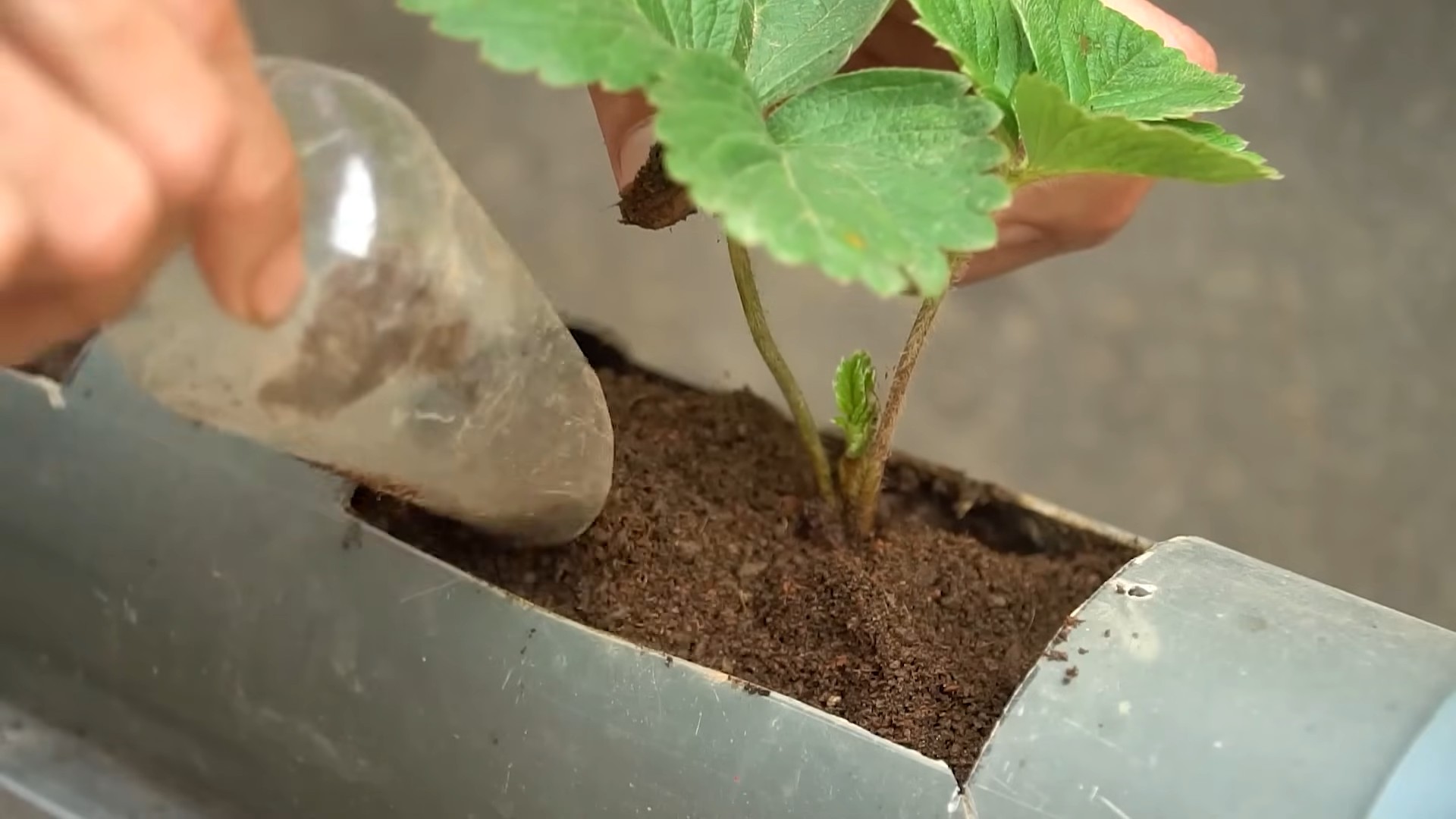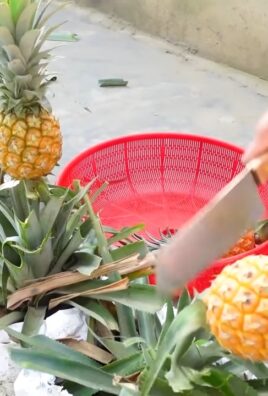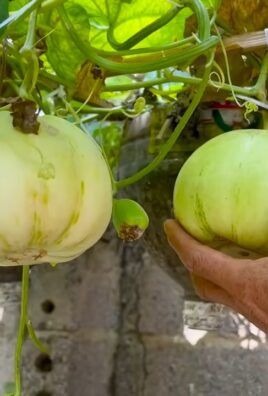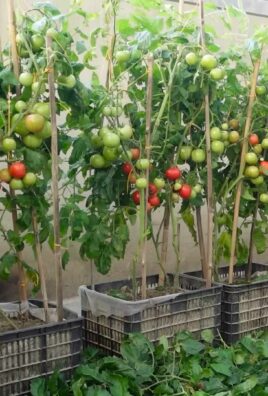Grow Strawberries at Home: Your Guide to a Sweet Harvest
Growing strawberries at home might seem daunting, but I’m here to tell you it’s easier than you think! This article is packed with simple, effective grow strawberries at home tricks and DIY projects that will transform your backyard or even your balcony into a strawberry paradise. Forget expensive supermarket berries – imagine the joy of biting into a sun-ripened, homegrown strawberry, bursting with flavor. That’s the magic we’re unlocking today.
The history of strawberry cultivation is surprisingly rich, dating back centuries. While the modern strawberry we know and love is a relatively recent hybrid, the cultivation of its ancestors has been a part of human history for ages, symbolizing abundance and sweetness in many cultures. But you don’t need to be a horticultural historian to enjoy the benefits!
Why Grow Your Own Strawberries?
There are so many reasons to embark on this rewarding journey of learning how to grow strawberries at home. Firstly, homegrown strawberries taste infinitely better than store-bought ones. They’re fresher, sweeter, and bursting with flavor because they haven’t traveled miles to reach your plate. Secondly, it’s incredibly satisfying to nurture a plant from seed to fruit, witnessing the miracle of nature unfold in your own backyard. And finally, it’s a cost-effective way to enjoy this delicious fruit throughout the season. You’ll save money and reduce your environmental impact by avoiding the transportation and packaging associated with commercially grown strawberries.
So, whether you have a sprawling garden or just a small balcony, get ready to discover the secrets to successfully growing strawberries at home. Let’s dive into these easy-to-follow grow strawberries at home techniques and transform your space into a sweet, fruitful haven!

Growing Strawberries at Home: A Complete DIY Guide
So you want to grow your own delicious strawberries? It’s easier than you think! Follow this guide and you’ll be enjoying homegrown berries in no time.
Choosing Your Strawberries and Planting Location
- Select your strawberry variety: There are June-bearing (one big harvest), everbearing (multiple harvests throughout the season), and day-neutral (harvests throughout the growing season) varieties. June-bearing are easiest for beginners. Consider the space you have available and the amount of strawberries you want to harvest when making your choice. Check your local nursery for recommendations based on your climate.
- Choose your planting location: Strawberries need at least 6-8 hours of direct sunlight per day. Select a spot that’s well-drained – soggy soil will lead to root rot. Observe your garden throughout the day to find the sunniest area. Consider the proximity to water sources for easy watering.
- Prepare the soil: Strawberries thrive in slightly acidic soil (pH 6.0-6.8). Test your soil’s pH using a home testing kit available at most garden centers. Amend the soil with compost or other organic matter to improve drainage and fertility. This will enrich the soil and provide essential nutrients for healthy growth. Aim for a loose, well-aerated soil texture.
Planting Your Strawberry Plants
- Purchase your strawberry plants: Buy healthy plants from a reputable nursery or garden center. Look for plants with vibrant green leaves and strong root systems. Avoid plants with signs of disease or damage.
- Dig planting holes: Dig holes that are about as deep as the root ball of your strawberry plants and twice as wide. Spacing depends on the variety – check the plant tag for recommendations. Generally, you’ll want 12-18 inches between plants.
- Plant the strawberries: Gently remove the strawberry plants from their containers, being careful not to damage the roots. Place the plants in the holes, ensuring the crown (where the leaves meet the roots) is at or slightly above the soil level. Do not bury the crown too deeply.
- Backfill and water: Fill the holes with soil, gently firming it around the roots. Water thoroughly after planting to settle the soil and help the plants establish themselves. A gentle soaking is better than a forceful stream.
Ongoing Care and Maintenance
- Watering: Water regularly, especially during dry periods. Aim for consistent moisture, but avoid overwatering, which can lead to root rot. Water deeply and less frequently rather than shallowly and often. A soaker hose or drip irrigation system is ideal for efficient watering.
- Mulching: Apply a layer of mulch (straw, shredded bark, or wood chips) around the plants to help retain moisture, suppress weeds, and regulate soil temperature. Keep the mulch away from the crown of the plant to prevent rot.
- Fertilizing: Feed your strawberry plants with a balanced fertilizer in early spring and again after the first harvest. Follow the instructions on the fertilizer packaging for proper application rates. Over-fertilizing can be harmful, so less is often more.
- Weed control: Regularly remove weeds to prevent competition for nutrients and water. Mulching helps significantly with weed control.
- Pest and disease control: Regularly inspect your plants for signs of pests or diseases. Address any issues promptly using appropriate organic or chemical controls. Early detection is key to preventing widespread problems. Consider using companion planting to deter pests naturally.
Harvesting Your Strawberries
- Harvest at the right time: Strawberries are ready for harvest when they are fully colored and slightly soft to the touch. Gently pull the berries from the plant, leaving the green cap attached. Avoid bruising the berries during harvesting.
- Enjoy your harvest: Eat your freshly picked strawberries immediately or store them in the refrigerator for a few days. You can also freeze them for later use in jams, pies, or smoothies.
Troubleshooting Common Problems
Root Rot
Symptoms: Wilting plants, yellowing leaves, soft or mushy roots. Solution: Improve drainage, avoid overwatering, and consider repotting into well-draining soil.
Pest Infestations
Common Pests: Aphids, spider mites, slugs, snails. Solutions: Use insecticidal soap or neem oil for aphids and spider mites. Handpick slugs and snails or use slug bait. Consider using beneficial insects like ladybugs to control pests naturally.
Disease Problems
Common Diseases: Gray mold (botrytis), leaf spot, powdery mildew. Solutions: Ensure good air circulation around plants, avoid overhead watering, and use appropriate fungicides if necessary. Remove and destroy infected plant parts.
Choosing the Right Containers for Container Gardening
If you’re growing strawberries in containers, choose pots that are at least 12 inches in diameter and have drainage holes. Larger containers are better for larger plants and more abundant harvests. Consider using self-watering containers to simplify watering.
Winterizing Your Strawberry Plants
In colder climates, protect your strawberry plants from frost and freezing temperatures by covering them with mulch or row covers. This will help them survive the winter and produce a bountiful harvest the following year.
Propagating Your Strawberry Plants
You can easily propagate your strawberry plants by taking runners (stolons) and planting them in new pots or directly into the ground. This is a great way to expand your strawberry patch without having to buy new plants.

Conclusion
So there you have it – a comprehensive guide to growing your own luscious, homegrown strawberries! This DIY approach to strawberry cultivation offers a rewarding experience that goes far beyond simply enjoying delicious fruit. It connects you to the natural world, allows you to control the quality and freshness of your produce, and provides a fantastic opportunity for learning and personal growth. Growing strawberries at home is not just about the harvest; it’s about the journey. The satisfaction of nurturing a plant from seed to ripe, juicy berry is unparalleled. You’ll be amazed by the vibrant colors, the sweet aroma, and the incredible taste of strawberries you’ve grown yourself – a flavor that simply can’t be matched by store-bought fruit. This method, with its focus on simple techniques and readily available materials, makes it accessible to everyone, regardless of experience level. Whether you have a sprawling garden or a small balcony, you can successfully cultivate your own strawberry patch. The initial investment is minimal, and the rewards are plentiful, both in terms of delicious fruit and the immense personal satisfaction of creating something beautiful and delicious from scratch. This DIY approach to growing strawberries is a must-try for anyone who appreciates fresh, flavorful food and the joy of gardening.
Beyond the basic method outlined, there are numerous ways to personalize your strawberry growing experience. Experiment with different strawberry varieties to discover your favorites – some are better suited to hanging baskets, while others thrive in raised beds. Consider companion planting, incorporating herbs like basil or thyme near your strawberry plants to deter pests and enhance the flavor of your berries. For those with limited space, vertical gardening techniques using trellises or hanging baskets are excellent options. If you’re dealing with a particularly challenging climate, explore the use of protective coverings like cloches or row covers to shield your plants from harsh weather conditions. Don’t be afraid to get creative and adapt the techniques to suit your specific environment and preferences. The beauty of this DIY approach is its flexibility – it’s a journey of discovery and experimentation, and the possibilities are endless.
We strongly encourage you to embark on this rewarding adventure of growing strawberries at home. Share your experiences with us! Post pictures of your thriving strawberry plants and your delicious harvests on social media using the hashtag #GrowStrawberriesAtHome. We’d love to see your progress and celebrate your successes with you. Let’s create a vibrant community of home strawberry growers, sharing tips, tricks, and the joy of harvesting our own sweet, sun-ripened berries. Remember, the journey is as important as the destination, and the taste of a homegrown strawberry is a reward in itself. So grab your seeds or plants, get your hands dirty, and start growing! You won’t regret it.
Frequently Asked Questions
What type of soil is best for growing strawberries?
Strawberries thrive in well-drained, slightly acidic soil with a pH level between 6.0 and 6.5. Amend heavy clay soils with organic matter like compost to improve drainage. Sandy soils may benefit from the addition of peat moss to retain moisture. Regular soil testing can help you maintain the optimal pH level for healthy strawberry growth. A soil test kit can be easily purchased online or at most garden centers.
How much sunlight do strawberries need?
Strawberries require at least 6-8 hours of direct sunlight per day to produce a bountiful harvest. Choose a location in your garden or on your balcony that receives ample sunlight, especially during the crucial fruiting period. Insufficient sunlight can lead to reduced yields and smaller, less flavorful berries.
When is the best time to plant strawberries?
The ideal time to plant strawberries depends on your climate. In many regions, spring (after the last frost) and fall are the best times for planting. Spring planting allows the plants to establish themselves before the summer heat, while fall planting gives them time to root before winter. Check your local gardening calendar for specific recommendations based on your region’s climate.
How often should I water my strawberries?
Consistent watering is crucial for healthy strawberry growth. Aim to keep the soil consistently moist but not waterlogged. Water deeply and less frequently rather than shallowly and often. The frequency of watering will depend on your climate and soil type. During dry periods, you may need to water more frequently. Mulching around your plants can help retain soil moisture and reduce the need for frequent watering.
What are some common pests and diseases that affect strawberries?
Strawberries can be susceptible to various pests and diseases, including slugs, snails, aphids, spider mites, and fungal diseases like gray mold (botrytis). Regularly inspect your plants for signs of infestation or disease. Implementing preventative measures such as companion planting, proper spacing, and good sanitation practices can help minimize pest and disease problems. Organic pest control methods are often effective and safer for the environment.
Can I grow strawberries in containers?
Absolutely! Container gardening is a great option for growing strawberries, especially if you have limited space. Choose containers that are at least 12 inches deep and have drainage holes. Use a well-draining potting mix and ensure the containers receive adequate sunlight. Hanging baskets are particularly well-suited for strawberry cultivation.
How do I harvest my strawberries?
Strawberries are typically ready for harvest when they are fully colored and slightly soft to the touch. Gently pull the berries from the plant, leaving the green cap attached. Harvest regularly to encourage continued production. Avoid harvesting berries when they are wet, as this can increase the risk of rot.
What can I do with my homegrown strawberries?
The possibilities are endless! Enjoy your fresh strawberries straight from the garden, or use them to make delicious jams, jellies, pies, cobblers, smoothies, or even strawberry shortcake. The sweet, intense flavor of homegrown strawberries elevates any recipe. Freezing your excess harvest is also a great way to preserve the bounty of your strawberry patch for later enjoyment.




Leave a Comment